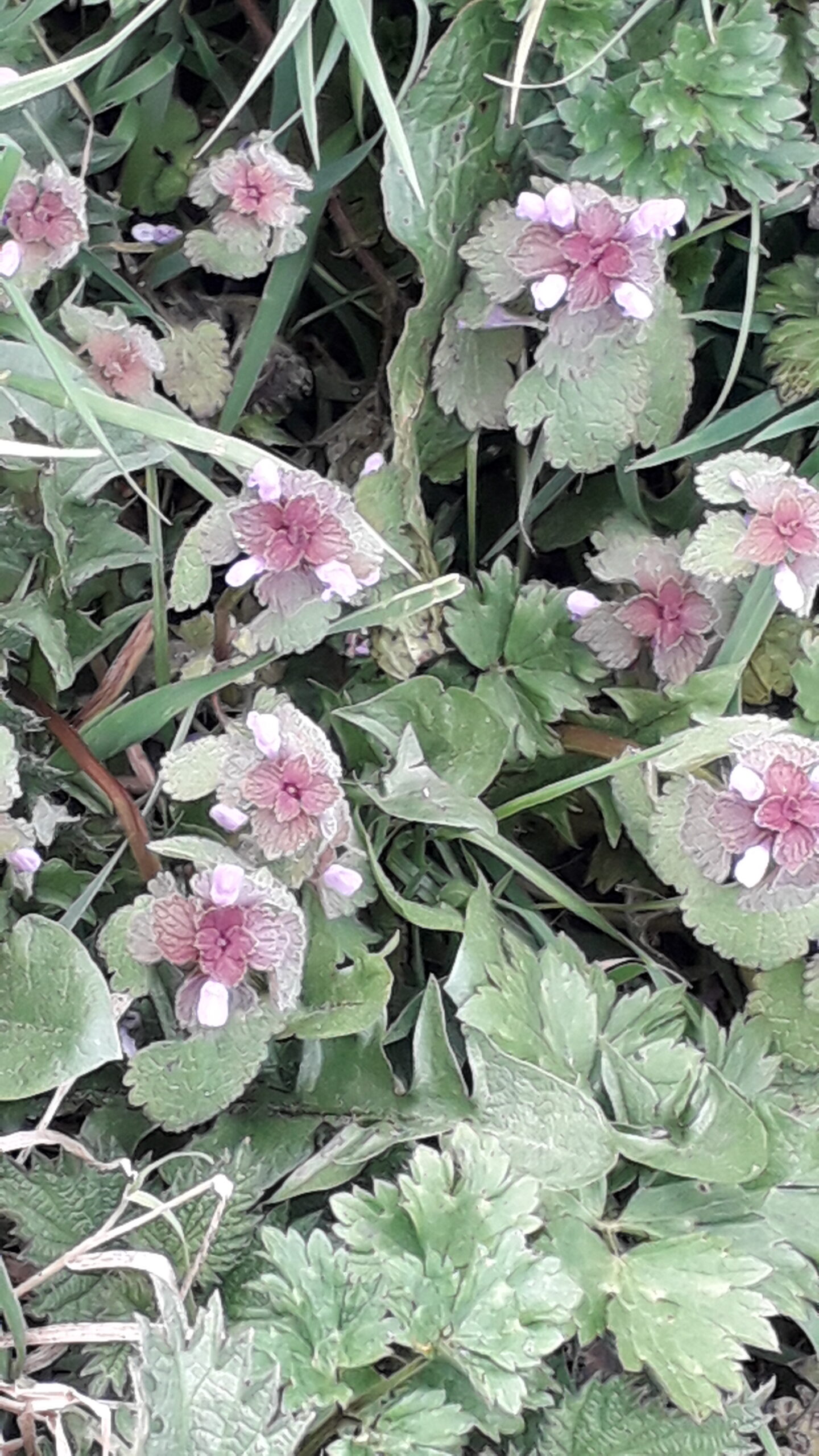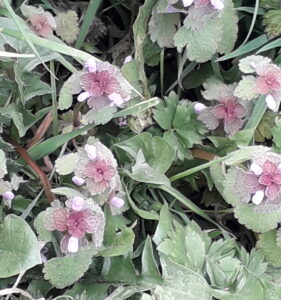As you go wandering around nature especially rivers, you will notice all kinds of plants that you may know as weeds.A common one would be the dandelion whose name it is said, comes from the French ‘dent de lion’ meaning lion’s tooth, referring to the coarsely toothed leaves. Dandelions are an important source of food for bees coming out of hibernation, so please leave them if they are in your garden.
There are a number of different weeds in the picture below:
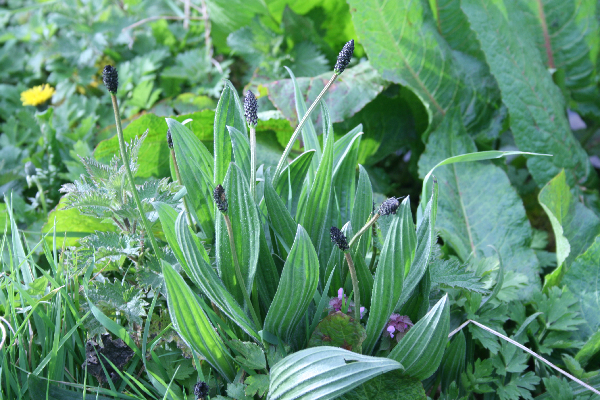
Dandelion- The leaves contain vitamins A, C, E, K, B6, beta carotene, folate, thiamine, riboflavin, calcium, iron, potassium and manganese and can be eaten as a salad or fresh vegetable. The flower-buds can be added to omelettes and fritters, the flowers baked into cakes, and even the pollen sprinkled on food for decoration and colouring. 1
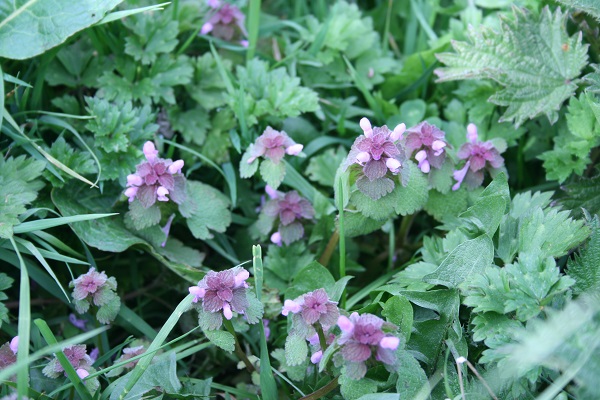
Lamium purpureum, known as red dead-nettle, purple dead-nettle, or purple archangel, is a herbaceous flowering plant native to Europe and Asia.
Purple deadnettle is not only a wild edible green, but a highly nutritious superfood that can be used in salads. It can also be made into an infusion or tea, with either fresh plant material or dried.
Purple dead nettle is also used for its medicinal benefits and is known in the herbal world as being astringent, diuretic, diaphoretic and purgative. It’s also anti-inflammatory, anti-bacterial, and anti-fungal and can be used as a poultice or in a salve.2
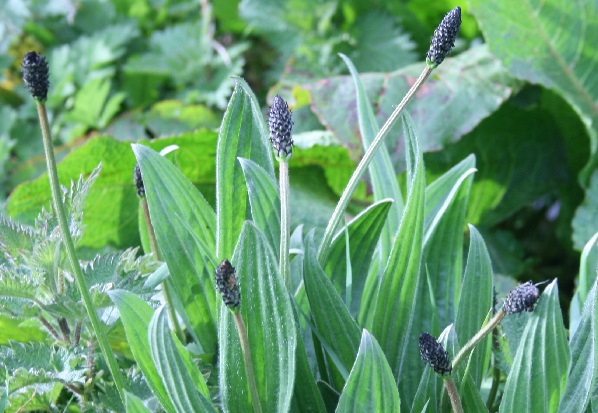
As a wild edible, the plantain species are considered highly nutritious, containing vitamins A, B, C and K, calcium, fibre, fat, protein, silicon, sodium, zinc, tannin and mucilage.2 The nutty-flavoured seeds are also considered a good source of protein.
The leaves are picked and used as a salad green, vegetable or potherb. The seeds have been ground to make flour.
PLantain has been used as a general remedy for many complaints from cuts, sores and bruises to kidney disease, bowel disorders and intestinal worms.3
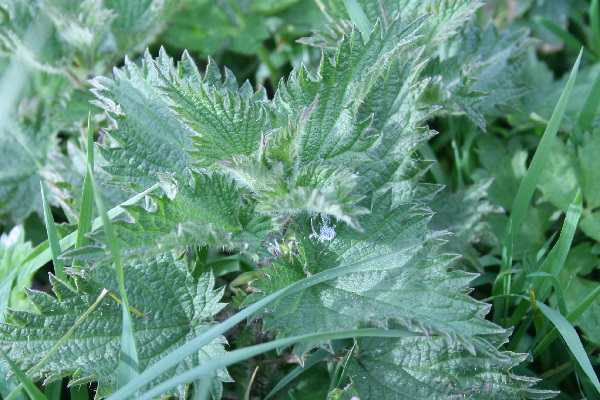
The shoots and leaves of stinging nettle – were traditionally picked as a spring tonic. Research has shown that nettle contains vitamins A, C and some B vitamins. Fresh nettles contain (per 100g) 670 mg potassium, 590 mg calcium, 18 mcg chromium, 270 mcg copper, 86 mg magnesium, and 4.4 mg iron.
Cooking the plant, even briefly, destroys the stinging hairs and makes nettle safe to eat.Nettle is also a popular herbal tea.4
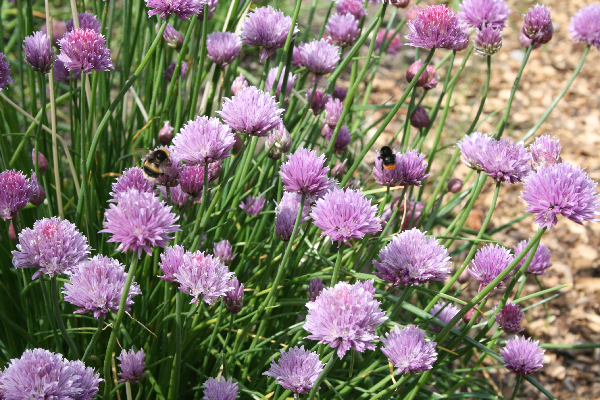
References
1.www.eatweeds.co.uk/dandelion-taraxacumofficinale#Common_Name
2. https://www.growforagecookferment.com/foraging-purple-dead-nettle/
3. https://www.eatweeds.co.uk/ribwort-and-greater-plantain-plantago-spp
4. https://www.eatweeds.co.uk/stinging-nettle-urtica-dioica

